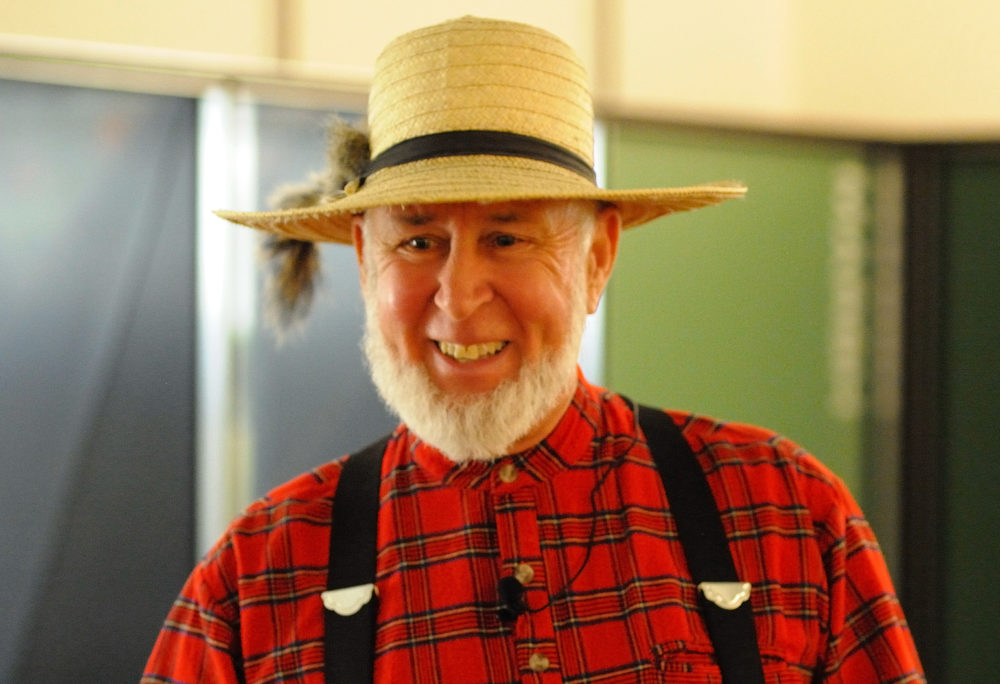The Great Lake states have their Paul Bunyan. The southwest boasts of Pecos Bill. There are tales of Davy Crockett, and Mike Fink, and John Henry that can be found in other parts of the country. These are all in truth more legend that fact. Pennsylvanian’s have a different kind of real-life folk hero to call our own, sadly one that is little known outside of the “Dutch Country” of Lancaster and Berks Counties. She is remembered in poem and in legend as “Mountain Mary.”
“Here under this stone rest in peace the remains of the pious Maria, her heart and her entire life were dedicated to God, as any could see from her conduct. In solitude she lived without complaint for thirty years, the lines of her face betraying God’s love with which the Lord rewarded her. Even after death sweet peace was visible in her countenance, it was full of love and bliss, as if directed toward the sun of grace. Now she is taken away, God bade her come to Him out of this vale of tears, where on the meadows of Heaven she will look upon Jesus and his elect number.”
This post-script to a poetic tribute to Mary, titled “Mountain Mary’s Epitaph,” was written by “A Gentleman of Oley” following her death in 1819. The text above followed several verses in her native German tongue. It was reported that her funeral was the largest ever held up to that time in Pike Township, Berks County. For almost a century, Mary was so remembered and beloved in a widespread community, that pilgrimages to her gravesite were annual affairs each November.
Her birth name was Maria, but she came to be called Mary by all who knew her during her long life. She was widowed at an early age when her husband, Theodore Young, a soldier of the Revolution, was killed during the war for independence. Mary never again married, and lived the life of a hermitess on a 42-acre farm in the Oley Hills of Berks County for at least 30 years. She described herself as a “spinster.” A young Philadelphia Quaker historian, Benjamin Hollinshead, who visited Mary sometime prior to her passing, reported her industry as “prodigious”, and “bore testimony to her great worth.” Although living alone, she was reported to have kept livestock and planted and reaped hay for their sustenance. She marketed butter and cheese, carrying it down the mountain paths to market on a tray she balanced on her head. She also kept several hives of bees.
By grafting, Mary created several new types of apples, known among her neighbors as “Mammy,” “Weiss,” and “Good Mary.” She even spent much time grading off the many walking paths she used in her travels to make passage across them easier.
Mary’s importance to the wider community was best documented in a later biography entitled “Maria Young, the Mountain Recluse of Oley” in a paper presented to the Berks County Historical Society in 1912, almost a century after her death. Daniel Miller reported that all the older people were familiar with Mary’s story, but that those folks were rapidly also passing on, and that he wanted to better document her story, “before the flight of time shall bury her in oblivion.”
Miller’s paper describes Mary as a “physician, of course not in the modern sense. She gathered many kinds of medicinal herbs and prepared remedies for various ailments. In this employment she was successful. ” Using mostly these household remedies in the treatment of sickness and injury, Mary rendered the community a great service in the absence of regular doctors. People came to her from near and far for her help in their sickness, and Mary herself often traveled over those mountain paths she had graded, often in the dark of night, to offer help in their own homesteads. It was this travel that led to her “Mountain Mary” eponym. She not only relieved the sick, but gave Christian comfort to the dying, spending much time at the bedside of those who were departing this life.
Treatment of sickness and ailing among the Pennsylvania German community of the 19th century by “healers” such as Mary was as much art as science. Often referred to as the “powwow doctor”, also known as the “Braucher,” these folk often practiced what was known as “white magic” with not a bit of what would be called witchcraft thrown in. Spells, and tokens, charms, rituals, magic words and the passing of hands were important parts of the process and treatments.
Mary’s belief in and use of such techniques is hinted at in a late 1890s article by Reading newspaperman Frank Brown, one of the area’s earliest folklorists. Brown describes her as a “great believer in witchcraft.” He reported that Mary herself often related a tale of “an owl that used to come and drink from her milk pail every evening while she was milking.” Mary came to believe that the owl was in fact a witch, and so she caught it and burned its feet slightly by holding the bird over her home fire. The very next morning, a neighbor woman whom Mary suspected, could not put on her shoes because of burned feet. For another glimpse at the art of the Braucher, see the tale “Hexed By the Dutchman” in this story group.
As late as 1934, tributes to Mary’s memory continued. The Daughters of the American Revolution, Berks County Chapter, erected a monument which described her as “a pioneer nurse, comforter of body and soul, benevolent, pious, brave, and charitable.” The marker includes the biblical verse, “She hath done what she could.”
